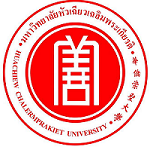Please use this identifier to cite or link to this item:
https://has.hcu.ac.th/jspui/handle/123456789/3685Full metadata record
| DC Field | Value | Language |
|---|---|---|
| dc.contributor.author | Sirawut Sittichok | - |
| dc.contributor.author | Hataichanok Passara | - |
| dc.contributor.author | Jirisuda Sinthusiri | - |
| dc.contributor.author | Tanapoom Moungthipmalai | - |
| dc.contributor.author | Cheepchanok Puwanard | - |
| dc.contributor.author | Kouhei Murata | - |
| dc.contributor.author | Mayura Soonwera | - |
| dc.contributor.author | ศิรวุฒิ สิทธิโชค | - |
| dc.contributor.author | หทัยชนก พัศระ | - |
| dc.contributor.author | จิริสุดา สินธุศิริ | - |
| dc.contributor.author | ธนภูมิ ม่วงทิพย์มาลัย | - |
| dc.contributor.author | ชีพชนก ภูวนารถ | - |
| dc.contributor.author | มยุรา สุนย์วีระ | - |
| dc.contributor.other | King Mongkut’s Institute of Technology Ladkrabang. School of Agricultural Technology | en |
| dc.contributor.other | King Mongkut’s Institute of Technology Ladkrabang. School of Agricultural Technology | en |
| dc.contributor.other | Huachiew Chalermprakiet University. Faculty of Public and Environmental Health | en |
| dc.contributor.other | King Mongkut’s Institute of Technology Ladkrabang. School of Agricultural Technology | en |
| dc.contributor.other | King Mongkut’s Institute of Technology Ladkrabang. School of Agricultural Technology | en |
| dc.contributor.other | Tokai University. School of Agriculture | en |
| dc.contributor.other | King Mongkut’s Institute of Technology Ladkrabang. School of Agricultural Technology | en |
| dc.date.accessioned | 2025-02-22T12:21:11Z | - |
| dc.date.available | 2025-02-22T12:21:11Z | - |
| dc.date.issued | 2024 | - |
| dc.identifier.citation | Insects 2024, 15(9), 714 | en |
| dc.identifier.other | https://doi.org/10.3390/insects15090714 | - |
| dc.identifier.uri | https://has.hcu.ac.th/jspui/handle/123456789/3685 | - |
| dc.description | สามารถเข้าถึงบทความฉบับเต็ม (Full text) ได้ที่: https://www.mdpi.com/2075-4450/15/9/714 | en |
| dc.description.abstract | Monoterpenes are effective and eco-friendly alternatives to conventional chemical larvicides. We tested single and binary mixtures of monoterpenes—geranial and trans-cinnamaldehyde—for their larvicidal and pupicidal activities against Aedes aegypti L. and for non-target toxicity on guppies (Poecilia reticulata Peters), using 1% (w/w) temephos as a reference. Geranial and trans-cinnamaldehyde at 250 ppm showed stronger larvicidal and pupicidal activities with a 100% mortality rate and an LT50 ranging from 0.3 to 0.6 h. All combinations were strongly synergistic against larvae and pupae compared to single formulations, with an increased mortality value (IMV) of 6% to 93%. The combination of geranial + trans-cinnamaldehyde (1:1) at 200 ppm showed the highest impact, with an IMV of 93%. The strongest larvicidal and pupicidal activities, a 100% mortality rate, and an LT50 of 0.2 h were achieved by geranial + trans-cinnamaldehyde (1:1) 500 ppm. They were thirty times more effective than a 1% temephos solution (LT50 ranging from 6.7 to 96 h) and caused obviously shriveled cuticles and a swollen respiratory system. All single and binary mixtures were not toxic to the guppies. Thus, the combination of geranial + trans-cinnamaldehyde has great potential as a safe insecticide for controlling mosquito larvae and pupae. | en |
| dc.language.iso | en_US | en |
| dc.subject | Monoterpenes | en |
| dc.subject | โมโนเทอปีน | en |
| dc.subject | Aedes aegypti L. | en |
| dc.subject | ยุงลายบ้าน | en |
| dc.subject | Geranial | en |
| dc.subject | เจอรานิออล | en |
| dc.subject | Essences and essential oils | en |
| dc.subject | น้ำมันหอมระเหย | en |
| dc.subject | Trans-cinnamaldehyde | en |
| dc.subject | ทรานส์-ซินนามาลดีไฮด์ | en |
| dc.subject | Mosquitoes -- Larvae -- Biological control | en |
| dc.subject | ลูกน้ำ -- การควบคุมทางชีววิทยา | en |
| dc.title | Synergistic Larvicidal and Pupicidal Toxicity and the Morphological Impact of the Dengue Vector (Aedes aegypti) Induced by Geranial and trans-Cinnamaldehyde | en |
| dc.type | Article | en |
| Appears in Collections: | Public and Environmental Health - Articles Journals | |
Files in This Item:
| File | Description | Size | Format | |
|---|---|---|---|---|
| Synergistic-Larvicidal-and-Pupicidal-Toxicity-and-the-Morphological-Impact-of-the-Dengue-Vecto.pdf | 62.87 kB | Adobe PDF | View/Open |
Items in DSpace are protected by copyright, with all rights reserved, unless otherwise indicated.
